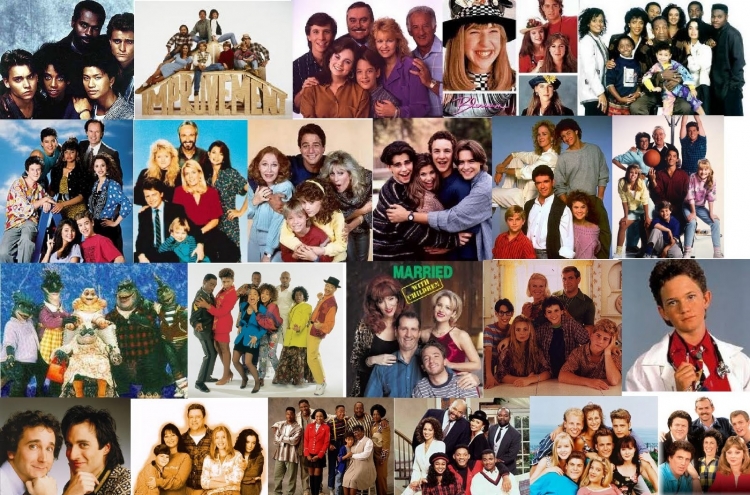
Reboots and revivals of classic TV shows have become a significant trend in the entertainment industry, capturing the attention of both nostalgic viewers and new audiences. These modern adaptations of beloved series blend nostalgia with contemporary storytelling, technology, and cultural updates, creating a unique television experience. This phenomenon can be attributed to several factors, including advancements in technology, the desire for familiar comfort, and the opportunity to introduce timeless stories to a new generation.
The Power of Nostalgia
Nostalgia plays a crucial role in the success of TV show reboots. For many viewers, classic television shows represent a connection to their past, evoking memories of simpler times and shared family experiences. The emotional resonance of hearing a familiar theme song or seeing beloved characters return to the screen can be incredibly powerful. Shows like “Fuller House” (a revival of “Full House”) and “Will & Grace” tapped into this sentimentality, bringing back not only the original characters but also the warmth and humor that fans cherished.
Innovation and Modernization
While nostalgia is a significant draw, successful reboots also incorporate modern elements to appeal to contemporary audiences. This includes updates in storytelling, social issues, and technological advancements in production. “Battlestar Galactica,” for example, reimagined the 1978 series with a darker, more complex narrative and high-quality special effects, appealing to a new generation of sci-fi fans. Similarly, “Doctor Who,” which has been rebooted several times since its original run in 1963, continuously evolves with new actors, story arcs, and visual effects to stay relevant and engaging.
Despite their popularity, TV show reboots face several challenges and criticisms. One common critique is that they can overshadow original content, leading to a saturation of the market with recycled ideas. Critics argue that this trend might stifle creativity and limit opportunities for new voices and stories to emerge. Additionally, there is always the risk that a reboot might not live up to the legacy of the original, disappointing fans and tarnishing the show’s reputation. “Charmed” and “Dynasty” reboots, for example, have faced mixed reactions, with some fans feeling that they lack the charm and authenticity of the originals.
Cultural Relevance and Social Commentary
Reboots often reflect the cultural and social changes that have occurred since the original series aired. By addressing current issues and diversifying their casts, these shows can resonate with modern viewers while retaining the essence of the original. “The Twilight Zone,” revived by Jordan Peele in 2019, maintained the anthology format of the 1959 classic but updated its themes to tackle contemporary societal issues such as racism, technology, and media influence.
Introducing Classics to New Audiences
One of the significant benefits of TV show reboots is their ability to introduce classic stories and characters to new audiences who may not be familiar with the originals. “She-Ra and the Princesses of Power,” a reboot of the 1985 animated series “She-Ra: Princess of Power,” brought the iconic character to a new generation with updated animation, storytelling, and character development. This not only revitalizes the franchise but also ensures its longevity and cultural relevance.
The entertainment industry is also driven by financial incentives and market demand when it comes to reboots. Established franchises come with built-in audiences, reducing the risk associated with launching entirely new content. Networks and streaming platforms recognize the potential for high viewership and fan engagement with well-known properties. For instance, Netflix’s revival of “Gilmore Girls: A Year in the Life” leveraged the show’s enduring popularity to attract both long-time fans and curious newcomers, resulting in significant viewership and media buzz.
Balancing Legacy and Innovation
The challenge for creators of reboots lies in balancing the legacy of the original series with innovative elements that make the show fresh and exciting. This delicate balance involves maintaining the core elements that made the original beloved while introducing new storylines, characters, and settings that reflect current trends and audience expectations. “Star Trek: Discovery,” for instance, respects the rich history of the “Star Trek” universe while exploring new narratives and incorporating cutting-edge visual effects.
The trend of rebooting classic TV shows is more than just a nostalgic cash grab; it represents a complex interplay of reverence for the past and a drive to innovate for the future. By understanding the reasons behind the success of these reboots—nostalgia, modernization, cultural relevance, and the introduction to new audiences—we can appreciate how they contribute to the evolving landscape of television. Whether it’s through revisiting old favorites or discovering new iterations of classic tales, these reboots offer a unique blend of comfort and excitement, making them a staple of contemporary entertainment.
- Step-by-Step Guide to Opting Out of GamStop and Exploring Alternatives - January 3, 2025
- Understanding CBDa: The Next Generation of Hemp Extracts - September 30, 2024
- Mastering Poker – Essential Strategies for Beginners - September 10, 2024
